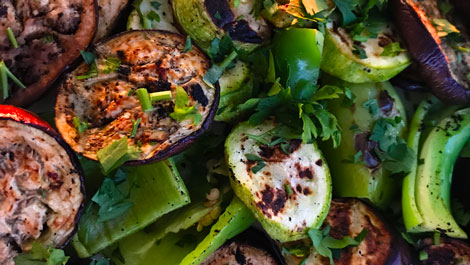Introduction to Montenegrin cuisine
Montenegro is a small country located in Southeastern Europe, known for its stunning mountain landscapes, medieval towns, and beautiful Adriatic coast. Montenegrin cuisine is heavily influenced by its Balkan neighbors, but also combines Mediterranean and Ottoman flavors. Meat, mainly pork and beef, is a staple in Montenegrin cuisine, but there are also plenty of seafood options due to the country’s proximity to the Adriatic sea.
Traditional Montenegrin dishes
Some of the most popular traditional Montenegrin dishes include Ćevapi, a dish made of grilled minced meat served in a pita bread with onions and ajvar, a spread made of roasted red peppers and eggplant; Pljeskavica, a large, grilled meat patty; and Njeguški pršut, a smoked ham that is a specialty of the Njeguši region. Other traditional dishes include seafood stews and soups, grilled fish, and lamb roasted on a spit.
Vegetarianism in Montenegro
Vegetarianism is not very common in Montenegro, and many traditional dishes contain meat. However, there is a growing number of vegetarians and vegans in the country, and some restaurants and cafes have started offering vegetarian options on their menus.
Vegetarian options in Montenegrin cuisine
Although vegetarian options may be limited, it is still possible to enjoy Montenegrin cuisine as a veggie lover. Some dishes that are traditionally meat-free include prebranac, a dish of baked beans; satarash, a stew made of peppers, tomatoes, and onions; and kacamak, a mashed potato dish served with cheese. Additionally, many restaurants offer salads and grilled vegetables as side dishes.
Local ingredients and vegetarian dishes
Montenegro has an abundance of fresh, locally-sourced ingredients that can be used to create delicious vegetarian dishes. The country is known for its olive oil, cheese, and honey, and there are also plenty of fruits and vegetables grown in the region. Vegetarian dishes can be made using these ingredients, such as a salad of fresh tomatoes and feta cheese, or a pasta dish with roasted vegetables.
Conclusion: Embrace the meatless side of Montenegrin cuisine
Although meat is a big part of Montenegrin cuisine, there are still options available for vegetarians and vegans. By exploring traditional meat-free dishes and incorporating local ingredients, it is possible to enjoy the flavors of Montenegrin cuisine without compromising your dietary preferences. With the growing popularity of vegetarianism and veganism, it is likely that more restaurants and cafes will start offering vegetarian options in the future.

